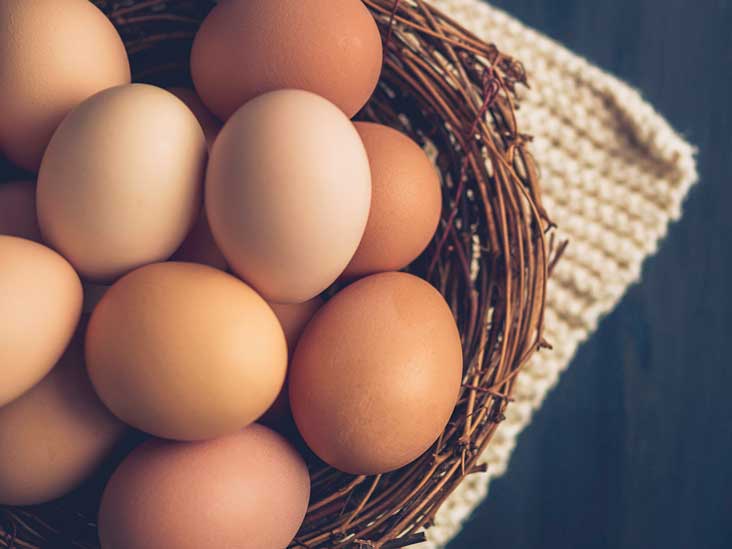If you're trying to enhance the size of your glutes, it takes more than just time at the gym. What you eat plays a huge role in the results you’ll see. Diet and training go hand-in-hand, and when it comes to sculpting a rounder, more muscular backside, certain foods offer nutrients that can support muscle growth, recovery, and performance.
Protein, of course, is a key part of the equation. But it's not the only one. Complex carbs, healthy fats, and various micronutrients all contribute to fueling your body and building lean muscle mass. When you combine the right foods with a solid strength training routine—especially exercises that target your glutes like squats, lunges, and hip thrusts—you create the best conditions for real transformation.
Here are 15 foods that can help you on your journey toward a stronger, fuller, more defined butt.
1. Salmon
Salmon is a nutritional powerhouse when it comes to building muscle. Each 4-ounce (113-gram) portion offers about 22 grams of high-quality protein. It's also one of the best natural sources of omega-3 fatty acids, which are known for reducing inflammation and promoting faster muscle recovery. That means you can hit your workouts hard and bounce back faster. Some studies even suggest omega-3s can directly aid muscle growth, especially in older adults or those new to training.
2. Flaxseeds
These tiny seeds deliver a surprising punch. They're rich in plant-based protein, omega-3s, magnesium, and B vitamins. Two tablespoons (around 21 grams) of flaxseeds contain approximately 4 grams of protein. That might not sound like much on its own, but added regularly to smoothies, yogurt, or oatmeal, it becomes a convenient way to increase your overall intake—especially if you're aiming to boost glute mass through clean, supportive nutrition.
3. Eggs
Eggs offer a complete protein source along with key nutrients like vitamin B12, phosphorus, selenium, and riboflavin. One medium egg has about 6 grams of protein, and more importantly, it contains leucine—an amino acid particularly important for muscle synthesis. Including eggs in your daily meals can help stimulate muscle repair and growth while keeping your energy levels balanced.
4. Quinoa
Often mistaken for a grain, quinoa is actually a seed—and a remarkably complete one. A 1/4-cup dry serving (about 45 grams) gives you 8 grams of protein and all nine essential amino acids your body needs for muscle development. It’s also packed with complex carbs, which can fuel your workouts and help with recovery. The combination of carbs and protein makes it ideal before or after strength training focused on glutes.
5. Legumes
This diverse group includes lentils, chickpeas, black beans, and more. They’re all rich in protein, fiber, and key minerals like magnesium, which supports muscle contraction and energy production. One cup of cooked lentils, for example, has around 18 grams of protein, while chickpeas offer about 13 grams. Add them to soups, grain bowls, or even blend into dips to make sure your muscles are well-fed for growth.
6. Brown Rice
Brown rice is more than just a healthy carb—it’s also a modest source of protein and contains branched-chain amino acids (BCAAs), which are directly used by muscles during workouts. A cooked cup (195 grams) provides over 5 grams of protein and a steady source of energy. You can also try brown rice protein powder, which has been shown to support muscle development and even improve body composition when combined with resistance training.
7. Protein Shakes
Sometimes whole foods aren't convenient right after a workout, and that's where protein shakes come in. Whey protein in particular has been proven to stimulate muscle protein synthesis. Blending it with milk, fruits, and even oats can turn a simple shake into a glute-friendly recovery meal. The key is to consume your shake within a window of about 30–60 minutes post-workout to maximize its benefits.
8. Avocados
Creamy, rich, and incredibly nutrient-dense, avocados are more than just a toast topping. They're packed with healthy fats, fiber, and a variety of micronutrients including potassium, magnesium, vitamin B6, and vitamin C. These nutrients are essential for reducing post-workout inflammation and promoting faster recovery. Potassium, in particular, helps regulate fluid balance and muscle contractions, supporting strength and growth. The antioxidants in avocados, like lutein and zeaxanthin, may also help reduce exercise-induced muscle soreness—keeping your glute training consistent and effective.
9. Milk
Milk provides a unique blend of both fast- and slow-digesting proteins, making it one of the best post-workout beverages for muscle repair. Each cup (about 236 ml) contains roughly 8 grams of protein. Several small studies have shown that drinking milk after resistance training can enhance gains in strength and lean muscle mass, particularly in women. It also helps deliver amino acids over an extended period, supporting continuous muscle recovery as you rest or sleep.
10. Pumpkin Seeds
These small seeds are nutrient-dense and surprisingly high in protein, with about 8.5 grams per ounce (28 grams). They’re also an excellent source of iron, manganese, phosphorus, and magnesium. After training, your muscles often need more magnesium to aid in recovery and muscle function. Incorporating pumpkin seeds into your diet can help meet that need while giving you a delicious, crunchy snack to support glute development.
11. Greek Yogurt
Compared to regular yogurt, Greek yogurt is much higher in protein—delivering about 24 grams per cup (245 grams). It contains both whey and casein protein, which provide your muscles with a fast and steady stream of amino acids. This combination is ideal for promoting long-lasting muscle growth. Studies show that when paired with resistance training, Greek yogurt can significantly improve muscle size, strength, and overall body composition—making it a great option for anyone looking to shape a fuller backside.
12. Tofu
Tofu is a staple in many plant-based diets and a surprisingly good source of high-quality protein. A 100-gram serving (3.5 ounces) provides about 10 grams of protein along with essential nutrients like calcium, phosphorus, and manganese. It's particularly rich in soy protein, which has been shown in studies to support muscle volume increases—especially when compared to milk-based proteins like casein. Tofu’s versatility also makes it easy to incorporate into stir-fries, scrambles, or baked dishes.
13. Nut Butters
Almond, peanut, and cashew butter are rich in healthy fats and minerals like magnesium, potassium, and vitamin E. Just one tablespoon offers roughly 3.5 grams of protein, making it a convenient way to boost protein intake in smoothies, snacks, or toast. Though more research is needed on nut butters alone, studies suggest whole nuts can improve endurance and performance—both crucial if you're following a consistent strength training routine for your glutes.
14. Chicken Breast
Known for its lean, high-quality protein, chicken breast delivers about 24 grams of protein in just 3 ounces (78 grams). It’s also a reliable source of B vitamins like B6, B12, and niacin, all of which help convert food into energy—essential when you're lifting weights or doing glute-targeting workouts. One study found that eating chicken protein post-workout significantly increased lean body mass over eight weeks, proving it’s not just a staple for bodybuilders but for anyone aiming for muscle gains.
15. Cottage Cheese
This soft cheese is another great choice for muscle building, offering around 22 grams of protein per cup (210 grams). It contains casein, a slow-digesting protein that’s perfect for nighttime recovery and prolonged muscle synthesis. Cottage cheese also provides important nutrients like vitamin B12, phosphorus, selenium, and riboflavin. Regular intake—especially before bed—can give your body the steady protein release it needs to recover and grow while you sleep.
What Really Works (and What Doesn’t)
There’s no magic food that can instantly enlarge your glutes—but there are patterns that work. All the foods listed above support muscle recovery, development, and performance. But without regular, targeted exercise—like squats, lunges, deadlifts, or glute bridges—even the most protein-packed diet won’t do the trick alone.
The real secret is consistency.
Your body changes when you give it the right combination of nutrients, resistance training, and rest. Glute growth doesn’t happen overnight, but when you eat smart and train hard, the process becomes a lot more predictable—and a lot more satisfying.
If you’re someone who’s always relied on cardio and still feels frustrated by the lack of shape in your lower body, shifting focus to resistance workouts and a protein-rich diet may be the change you’ve needed all along. It’s also worth noting that some people gain muscle more easily than others—genetics play a role—but with the right habits, everyone can make visible progress.
Bonus Tips for Bigger Glutes (Beyond Food)
While nutrition is foundational, a few extra strategies can help accelerate your journey:
-
Train glutes 2–3 times a week, but don’t overdo it. Muscles grow during recovery.
-
Increase training volume gradually. Challenge yourself over time with more sets, reps, or resistance.
-
Track your protein intake. Most people need 0.7 to 1 gram of protein per pound of body weight to support muscle building.
-
Sleep well. Growth hormone production spikes during deep sleep.
-
Stay hydrated. Even mild dehydration can reduce strength and recovery.
-
Don’t skip carbs. Your muscles need energy to grow, and carbs provide fuel for performance and recovery.
When combined with the right mindset, nutrition, and movement, the results will come—not all at once, but steadily. The goal isn’t just to build a bigger butt, but to build strength, confidence, and a body you feel great living in.


















